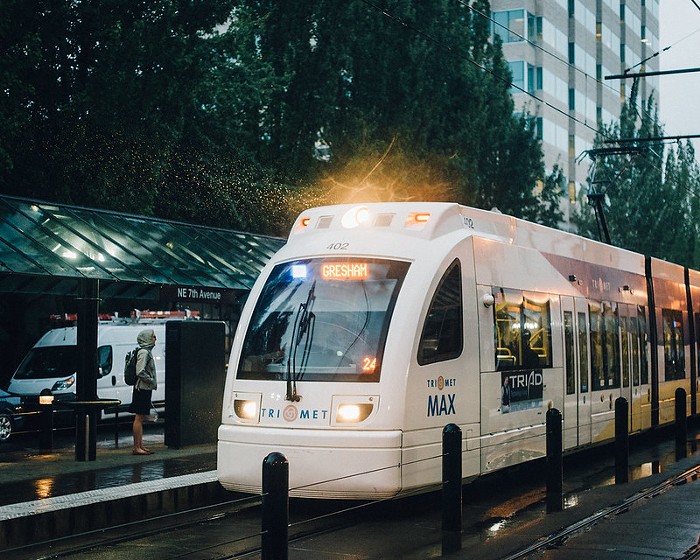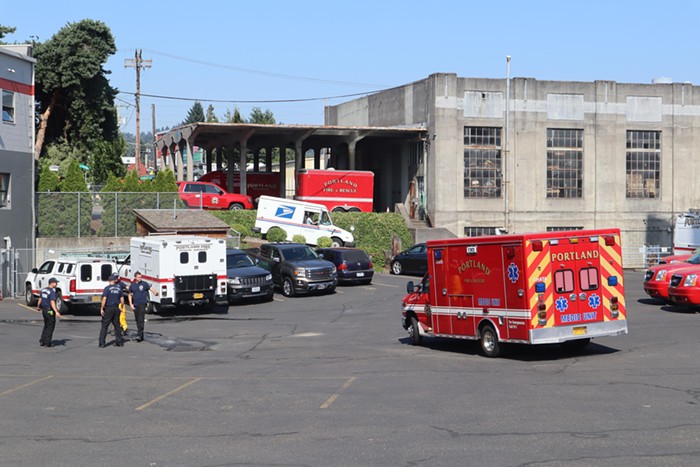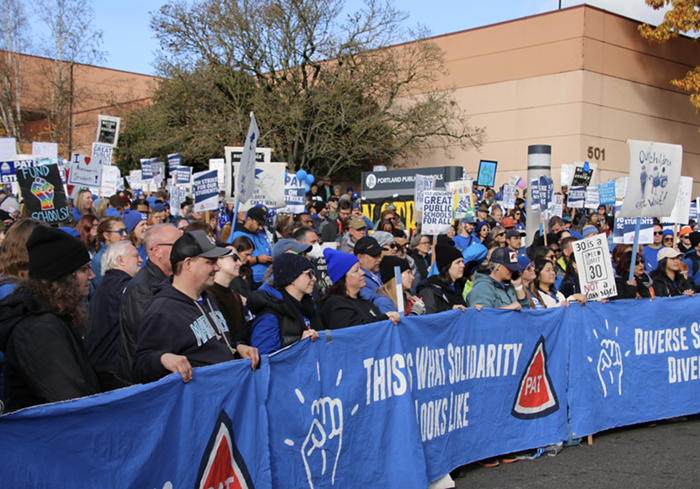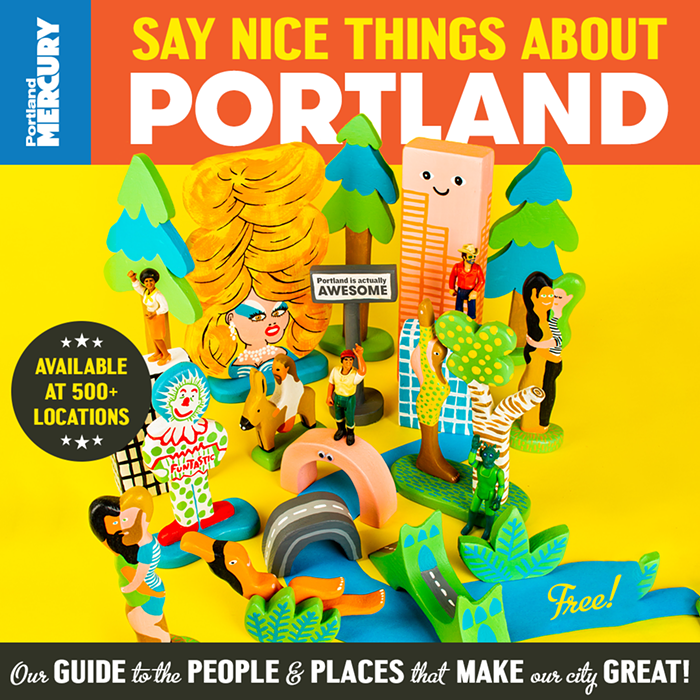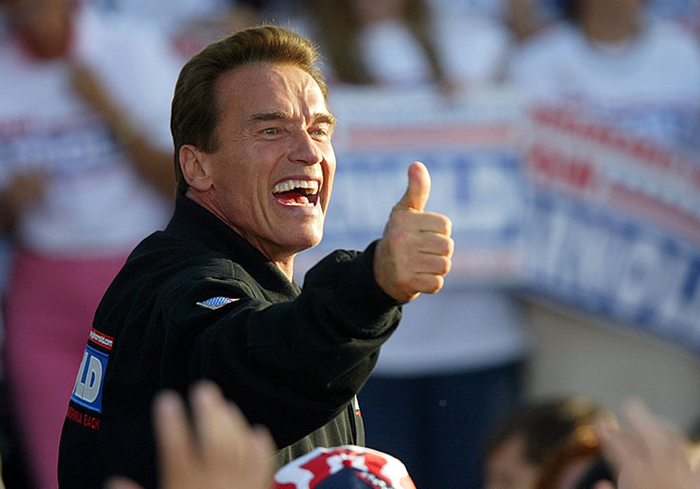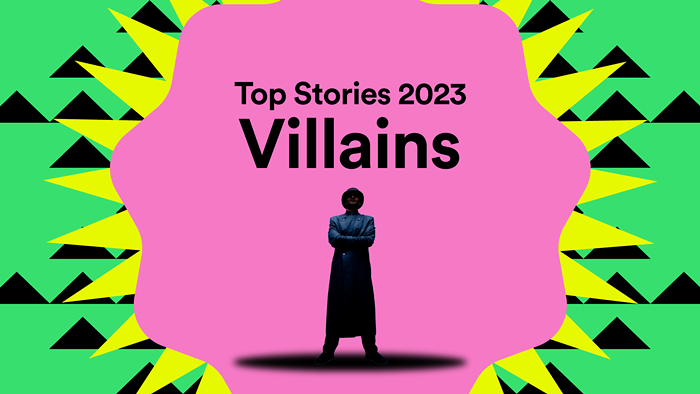And, as local skaters will routinely tell you, they outnumber ballplayers, yet our city has over 190 baseball fields. Looking for a resolution to this disparity is Rod Wojtanik, the point person in the city's ambitious plan for a network of skateboard parks in Portland. He arrived at his job as a project manager two years ago, and landed right in the center of a heated battle between skaters and neighborhood residents--who, unsurprisingly, don't want skaters carving up their backyards.
One such neighborhood group includes the people who live adjacent to Westmoreland Park. When a redesign plan for the marshy plot of land was being floated at neighborhood meetings, a group calling itself Skaters for Portland Skateparks made an appearance to pitch its ideas for a skating space.
"This was one of my first projects," says Wojtanik, who remembers that the first meeting he attended quickly turned into a heated debate. "The first comment was, 'We should have a skatepark here.' Then the next comment was, 'There's no way in hell we're having a skatepark here.' I thought to myself, 'Here we go. The race is on... '"
In his mid-30s, Wojtanik is patient and seemingly unflappable. A landscape artist by training, Wojtanik spent several years helping the city of Vancouver, WA, design and place skateparks. He admits he's not an avid skateboarder--most of his skate time was logged as a kid, living in upstate New York. But, since starting his new job with the city's Parks and Rec Bureau, he rides now and then.
"If you want to understand skaters, you have to skate," he says. "Skateparks are an urban art form, like a concrete wave," Wojtanik adds. "Unless you understand what it's like to carve that wave," he continues, "you shouldn't put pen to paper."
Ultimately, a plan to place a skatepark in Westmoreland was approved, but a stubborn group of residents--who skaters refer to as NIMBYs (not-in-my-backyarders)--derailed the plan. They demanded the city conduct a wider search for comparable sites--a study which is currently underway. However, if Westmoreland does not qualify as one of the two best sites, the plan will be scuttled.
"The real travesty," says Wojtanik, "is that skaters have to fight for everything they get."
The debate over skateparks is one that echoes the discussion over ball fields a century ago, when neighbors, worried about noise and errant baseballs sailing through kitchen windows, stood against the placement of fields in parks. NIMBYs complain that skaters attract drugs, trash, and are unbearably noisy.
"But skateparks aren't loud," Wojtanik counters. "Or at least, it's not the wheels or the grinding. It's the cheering," he explains. "Typically, parks are only noisy because kids are having fun.
"No one has given me a compelling reason why a skatepark can't work," he says, pausing briefly before adding, "other than political pressure."
But the rules of the debate changed last year, when Multnomah County voters approved a property levy. Tucked into the revenue approved for the Parks and Rec Bureau was $500,000 for skateparks. "Portland voters really stepped up to begin this process," Wojtanik says.
Even so, the property levy allowed a leisurely decision-making time of five years. But Wojtanik is convinced he can pressure that timeframe, and plans to push for more concrete decisions on skateparks within the next nine months.
"If we have the political balls, we can do it," he concludes.
THE POLITICS OF SKATING
The history of Portland skateparks is a story of hits and misses. Several years ago, a group of volunteers attempted to build a 7,500 square-foot park in St. Johns. They went about the process judiciously, receiving an endorsement from the neighborhood association--but the construction and the design were substandard. Today, the park stands largely unused, with puddles gathering during the winter months, slowly crumbling the concrete.
A more successful story was born 14 years ago, when a renegade group of skateboarders built an ambitious skatepark underneath the Burnside Bridge. The designers and construction crew didn't ask the city for permission; they simply built the park. With sheer walls and swooping corners, the park at Burnside is dizzying and intoxicating. It's one of the best-known parks in the world, even serving as the blueprint for Tony Hawk's Pro Skater video game.
The city responded to this unsanctioned park with an attitude better categorized as tolerance than encouragement. Over the years, they've provided a port-a-potty and a garbage can. Skaters are responsible for keeping the park tidy and safe, with the looming threat of yanked privileges if they screw up.
(More recently, the Department of Skateboarding opened a quality, indoor park in Northeast Portland, but it's a private site, not city-sponsored.)
In recent years, Portland has lost its claim as a skating pioneer town. Skate parks have popped up around the country and around the state. A recent survey of local skaters put Burnside as only their second-most favorite place to ride in the state; a sprawling and challenging park in Newberg tops the list (where the Chamber of Commerce proudly proclaims it as one of their city's most visited sites).
However, as little as three years ago, skaters thought they were making progress in Portland. They had chosen a site near the Steel Bridge and were talking with staff members of then-city council member Charlie Hales, when the talks suddenly broke off. It's still unclear what happened, but the popular belief is that a prominent developer and property-owner complained to someone at Hales' office. After the complaint, according to skaters involved, one of Hales' staff smothered the plan.
Strangely, a few months later, council member Hales stepped up for skaters, proposing an ordinance to kill a ban against skateboarders and inline skaters in the downtown blocks. There was a heated debate, but Hales' ordinance passed 3-2. Along with mayor Vera Katz, Jim Francesconi--the head of Parks and Rec, and the ultimate decision-maker for the current skatepark plan--voted against the ordinance.
THE CROWN JEWEL OF SKATEPARKS
The current plan for skateparks is more ambitious than anything ever proposed in Portland--or, for that matter, the world. If carried through, Portland could become a maverick in city-sponsored recreational opportunities.
The property levy mandated that two parks would be constructed within five years (by 2008). But skaters have already expanded that idea into an impressive three-tier model. At the nucleus of their plan is a 50,000 square-foot "crown jewel" park. Like the Burnside skatepark, this site would be centrally located. A few skaters are looking at vacant lots near the Hawthorne Bridge.
In addition to the "crown jewel," five other slightly smaller parks would be placed throughout town. These neighborhood parks would become hubs for a handful of tiny "skate spots"--like a small swimming pool or just a rail--placed in city parks.
The price tag for this grand plan would far exceed the available revenue; conservative estimates place the cost at $10 million. But skaters hasten to point out the money could be quickly recovered. When San Diego hosted the X-Games, the city benefited to the tune of $4 million from contracts with ESPN, hotel bills, and merchandise sales. Also, skaters are optimistic that more than half the funding could come from private donors.
At best, the plan is still idle chatter amongst skaters and bureaucrats. However, on Tuesday, the first Citizens Advisory Committee meeting was held to discuss moving forward with proposals. They aren't laying cement yet, but a year after voters asked for it, the wheels are starting to roll.
For more information or to get involved with the skatepark plan, contact Rod Wojtanik at rwojtanik@ci.portland.or.us.

